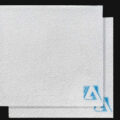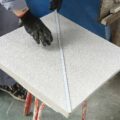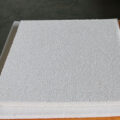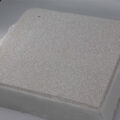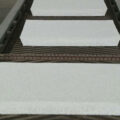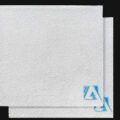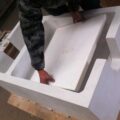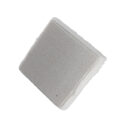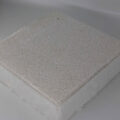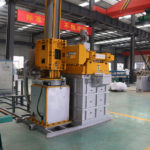Ceramic foam filter for molten metal filtration is used as a means of separating finely divided solid impurities suspended in the melt. For this purpose, it is recommended to use a refractory bed, compacted loose filter material block or screen. It has also been proposed that ceramic foam filter can be used as a filter medium because it provides a very small tortuous channel that can trap and retain small suspended particles.
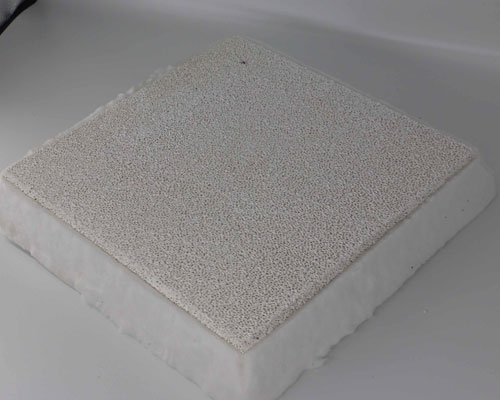
During the melting and processing of molten aluminum, a film is usually formed on the surface of the molten metal, the film is mainly composed of aluminum oxide and/or its alloy components, and the film is decomposed and dispersed as it is in the molten metal to melt, and transfer to the ladle or mold during the stirring.
In addition, there may be skin-derived particles on the solid metal charged into the furnace or furnace, or there may be refractory particles falling off the lining of the furnace or conveying tank. Although extreme care must be taken during the sintering and degreasing of molten metal, some finely divided non-metallic solids remain in the solidified metal. Although such non-metallic impurities are harmless in some castings, they are objectionable in others, especially when they prevent obtaining a fine finish or act as a nucleus for forming gas-filled voids.
The slag removal outside the furnace is mainly done through the ceramic foam filter for molten metal, which has a multi-layer network and multi-dimensional through holes, and the holes are connected. When filtering, the molten aluminum carries inclusions and flows along the tortuous channels and pores. When it contacts the foamed framework of the filter plate, it is directly blocked, adsorbed, deposited, etc., when the melt flows in the pores, the filter plate channel is curved, The melt flowing through the channel changes the flow direction, and the inclusions collide with the hole wall anvil and firmly adhere to the hole wall.
The main advantage of the ceramic foam filter system is that the slag inclusions generated during the transfer process outside the furnace are effectively eradicated through the filter plate, and the micron-sized inclusions in the aluminum liquid that the conventional technology cannot do. At the same time, because the filter plate filters out the fine inclusions and reduces the effective number of crystal nuclei in the molten aluminum, the molten aluminum nucleates and grows under the larger supercooled parts, which shortens the solidification time and refines the structure. Reduce the hydrogen content in molten aluminum. Hydrogen atoms can be adsorbed on some oxidized inclusions, and the oxidized inclusions can become the core of bubble growth, so the inclusions are filtered out and the gas on them is also removed. Through adsorption, the content of harmful elements (sodium, potassium) in molten aluminum can be removed. According to different customer requirements or on-site environment, selecting a filter plate suitable for ensuring product quality can effectively control slag inclusion.

